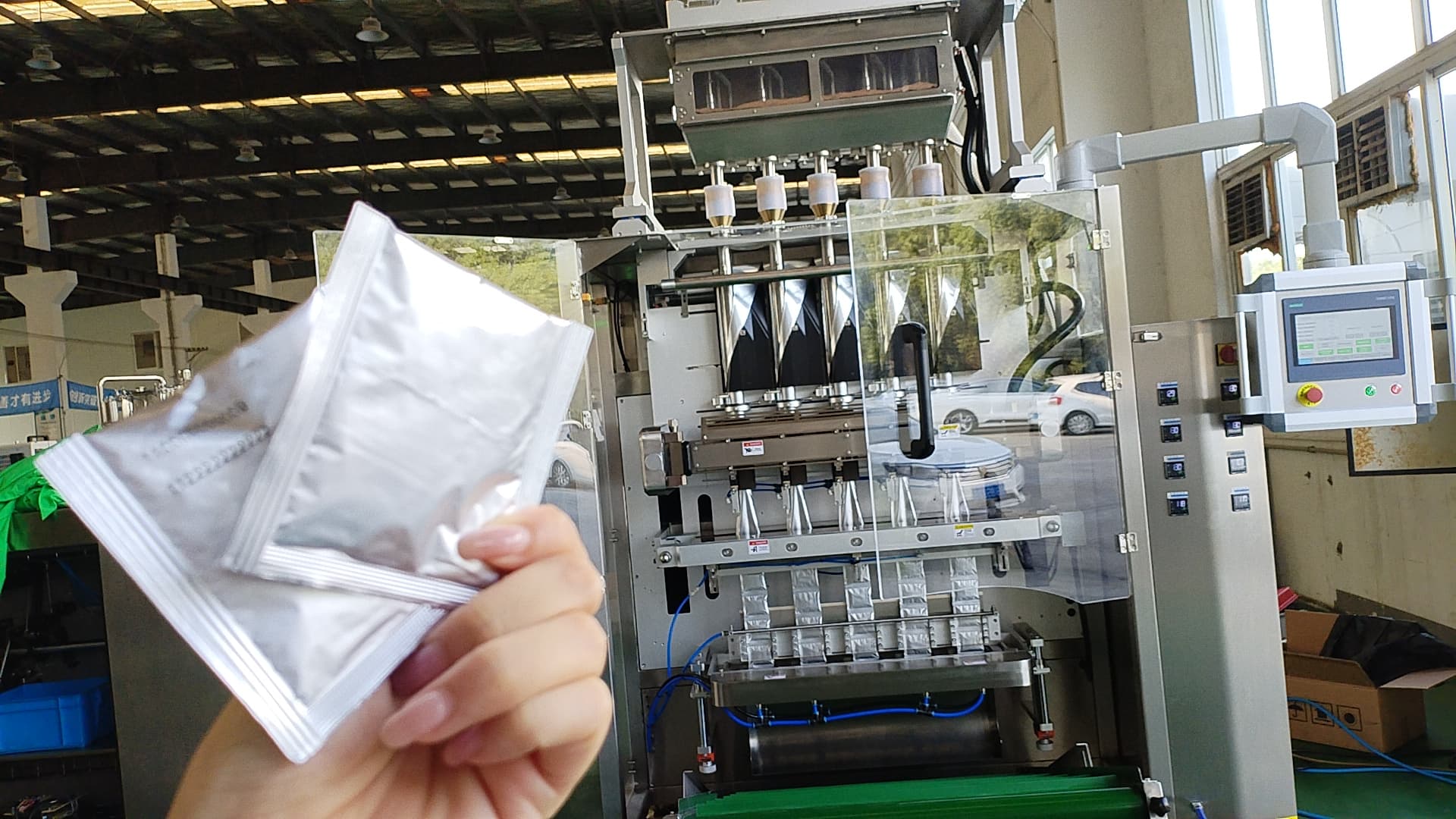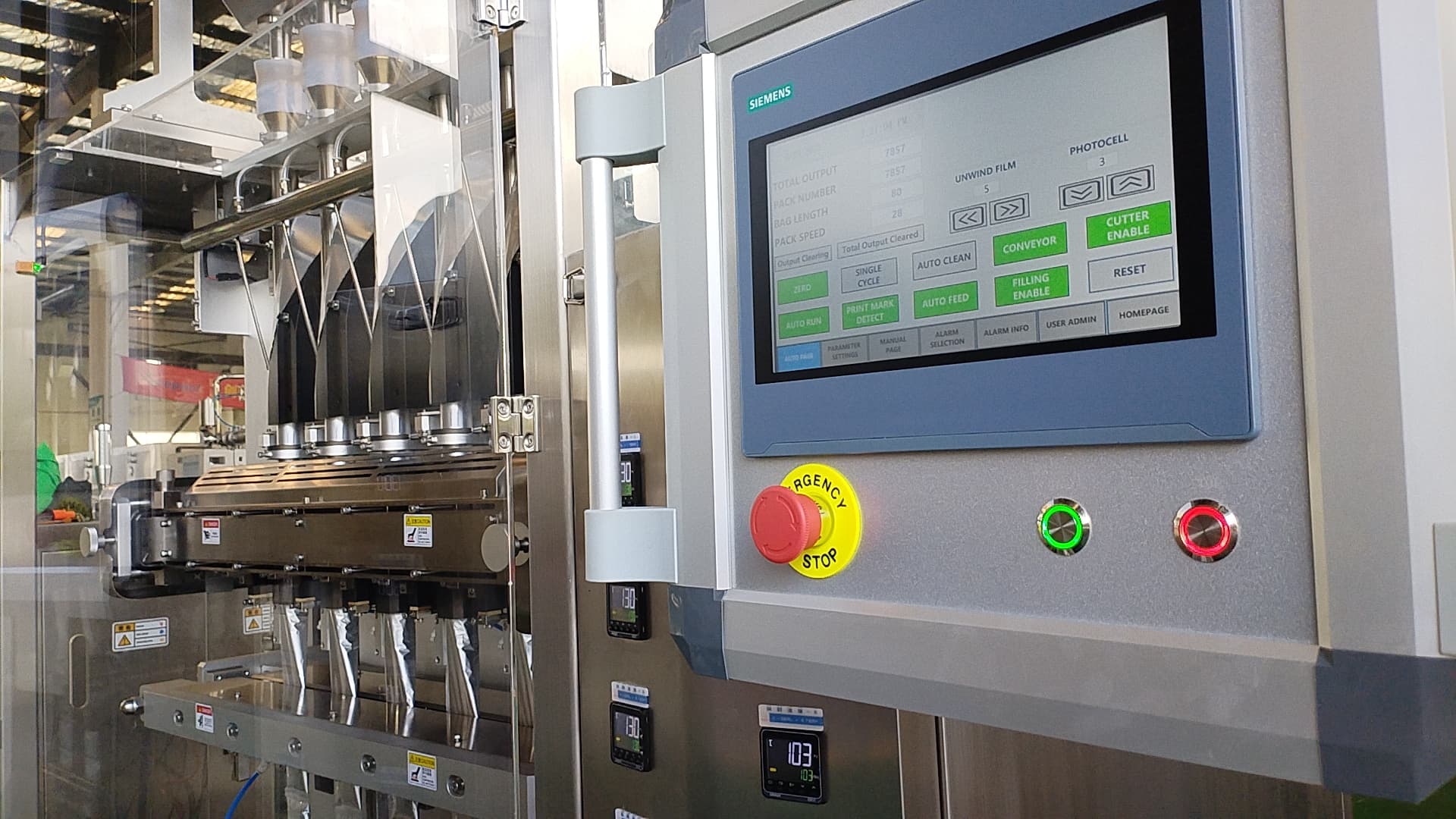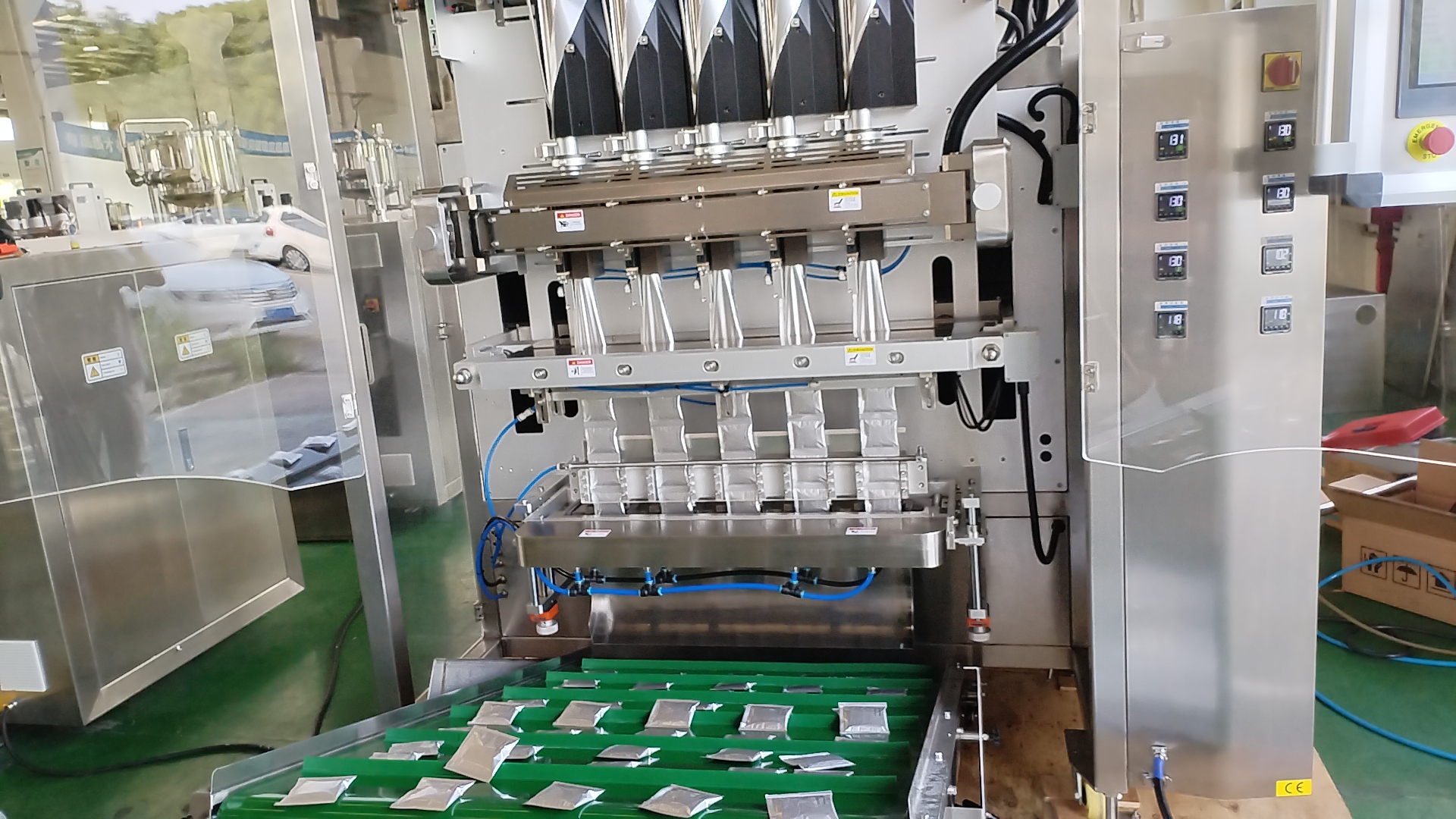Required web technologies and cookies make our website technically accessible to and usable for you. This applies to fundamental base functionalities such as navigation on the website, correct display in your internet browser or requesting your consent. Without these web technologies and cookies our website does not work.

Vertical 3-side-seal Multi-lane Bag Packaging Machine: A Game-Changer in Pharmaceutical Production
The pharmaceutical industry demands precision, speed, and uncompromising safety in packaging processes. With the rise of global health challenges, manufacturers are increasingly turning to advanced automation solutions like the vertical 3-side-seal multi-lane bag packaging machine. This innovative equipment is designed to handle multiple lanes of packaging simultaneously, using a vertical formation and three-side sealing technology to create secure, sterile bags for various medical products. In this article, we delve into its applications in the pharmaceutical sector, exploring how it boosts efficiency, ensures compliance, and addresses industry-specific challenges. By the end, you'll understand why this machine is becoming a cornerstone in modern drug production facilities.
What is a Vertical 3-side-seal Multi-lane Bag Packaging Machine?
A vertical 3-side-seal multi-lane bag packaging machine is a specialized automated system that forms, fills, and seals bags in a vertical orientation, with sealing occurring on three sides (typically the two vertical edges and one horizontal edge). The "multi-lane" feature allows it to process multiple bags concurrently, significantly increasing output rates. In pharmaceutical contexts, this machine is engineered to handle sensitive materials like tablets, capsules, powders, and liquids, ensuring each bag is hermetically sealed to prevent contamination. Its design often incorporates stainless steel components and easy-to-clean surfaces to meet stringent hygiene standards. For instance, in packaging oral rehydration salts or antibiotic sachets, the machine can achieve speeds of up to 200 bags per minute per lane, making it ideal for high-volume production lines. The integration of servo motors and PLC (Programmable Logic Controller) systems enables precise control over filling weights and sealing temperatures, which is critical for maintaining product integrity in drug manufacturing.
How Does This Machine Improve Efficiency in Pharmaceutical Packaging?
Efficiency is paramount in pharmaceutical production, where delays can impact patient access to essential medications. The vertical 3-side-seal multi-lane bag packaging machine enhances efficiency through its multi-lane design, which allows parallel processing of bags. Unlike single-lane machines, this system can handle 2 to 8 lanes simultaneously, reducing cycle times and increasing throughput by 30-50%. For example, in a facility packaging vitamin supplements, this machine can produce over 1,000 bags per minute across multiple lanes, minimizing bottlenecks. Additionally, its vertical orientation saves floor space, a valuable asset in crowded production environments. The automation features, such as automatic film feeding and fault detection, reduce manual intervention, lowering labor costs and human error. In terms of material usage, the machine optimizes film consumption through precise cutting and sealing, leading to less waste and cost savings. Case studies from pharmaceutical companies show that adopting this technology can cut packaging time by up to 40%, allowing faster market entry for new drugs and better responsiveness to demand surges, such as during pandemics.
Why is Sterility and Compliance Crucial in Medical Applications?
In the pharmaceutical industry, sterility and regulatory compliance are non-negotiable. The vertical 3-side-seal multi-lane bag packaging machine addresses these needs by incorporating features that align with Good Manufacturing Practices (GMP) and international standards like ISO 13485. The three-side seal creates a robust barrier against moisture, oxygen, and microbial ingress, which is vital for products like sterile dressings or injectable powders. The machine often includes HEPA filters and cleanroom-compatible designs to maintain aseptic conditions during operation. For instance, in packaging hydrocolloid wound care products, the seal integrity prevents contamination, ensuring patient safety. Moreover, the machine supports traceability through barcode printing and data logging, facilitating compliance with regulations such as the FDA's Drug Supply Chain Security Act. By automating quality checks—like vision inspection systems for seal defects—it reduces the risk of recalls and enhances overall product reliability. Pharmaceutical manufacturers report that using this machine helps them pass audits more easily, as it provides documented evidence of consistent, compliant processes.
What Are the Key Features for Handling Sensitive Pharmaceutical Products?
Pharmaceutical products often require delicate handling to preserve efficacy and stability. The vertical 3-side-seal multi-lane bag packaging machine is equipped with features tailored for sensitive materials. These include gentle product handling mechanisms, such as vibratory feeders for tablets or auger fillers for powders, which minimize breakage and ensure accurate dosing. The sealing process uses controlled heat and pressure to avoid damaging heat-sensitive drugs, like certain biologics or probiotics. For example, in packaging lyophilized vaccines, the machine maintains low temperatures during sealing to prevent degradation. Other key features include CIP (Clean-in-Place) systems for effortless sanitation, anti-static components to handle powdered medications safely, and customizable lane configurations for different bag sizes. The integration with IoT (Internet of Things) allows real-time monitoring of parameters like temperature and humidity, enabling proactive adjustments. This level of customization and control makes the machine versatile for various pharmaceutical applications, from OTC drugs to prescription medications, ensuring that each product is packaged with precision and care.
How Can This Machine Support Sustainable Practices in Pharma?
Sustainability is gaining traction in the pharmaceutical industry, and the vertical 3-side-seal multi-lane bag packaging machine contributes by promoting eco-friendly operations. Its efficient material usage reduces plastic waste, as the three-side seal design often requires less film compared to four-side alternatives. Many models support biodegradable or recyclable packaging films, aligning with corporate sustainability goals. Energy-saving features, such as servo-driven motors that consume less power, further lower the carbon footprint. In practice, a pharmaceutical company using this machine reported a 20% reduction in packaging material waste and a 15% drop in energy consumption annually. Additionally, the machine's durability and low maintenance needs extend its lifespan, reducing electronic waste. By enabling faster production with fewer resources, it supports the industry's shift toward green manufacturing, without compromising on safety or efficiency.
In conclusion, the vertical 3-side-seal multi-lane bag packaging machine is a transformative tool in pharmaceutical production, offering unmatched efficiency, compliance, and adaptability. As the industry evolves toward more automated and sustainable practices, this machine will continue to play a pivotal role in ensuring safe, reliable drug packaging. Manufacturers looking to upgrade their lines should consider its multifaceted benefits to stay competitive and compliant.
We use our own and third-party cookies to ensure the proper functioning of the web portal and its complements, perform navigation analysis and show multimedia content. If you continue browsing, you accept the use of this technology. For more information please see our Cookies Policy
We want to constantly improve the user-friendliness and performance of our websites. For this reason we use analysis technologies (including cookies) which pseudonymously measure and evaluate which functions and content of our websites are used, how and how often. On this basis we can improve our websites for users.
Contact information:
Address: #330, Xinnuo Road, Fengxian District, Shanghai





